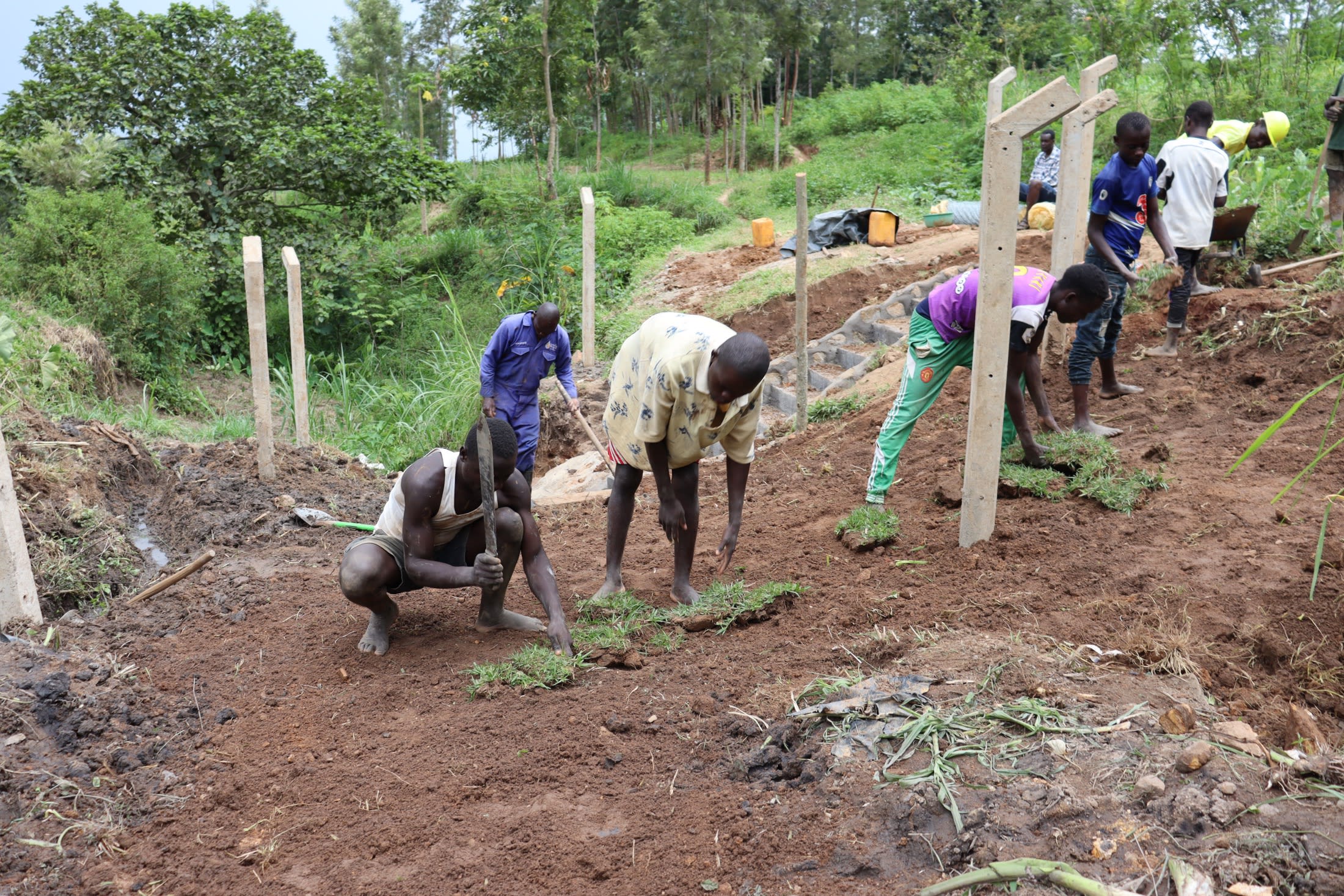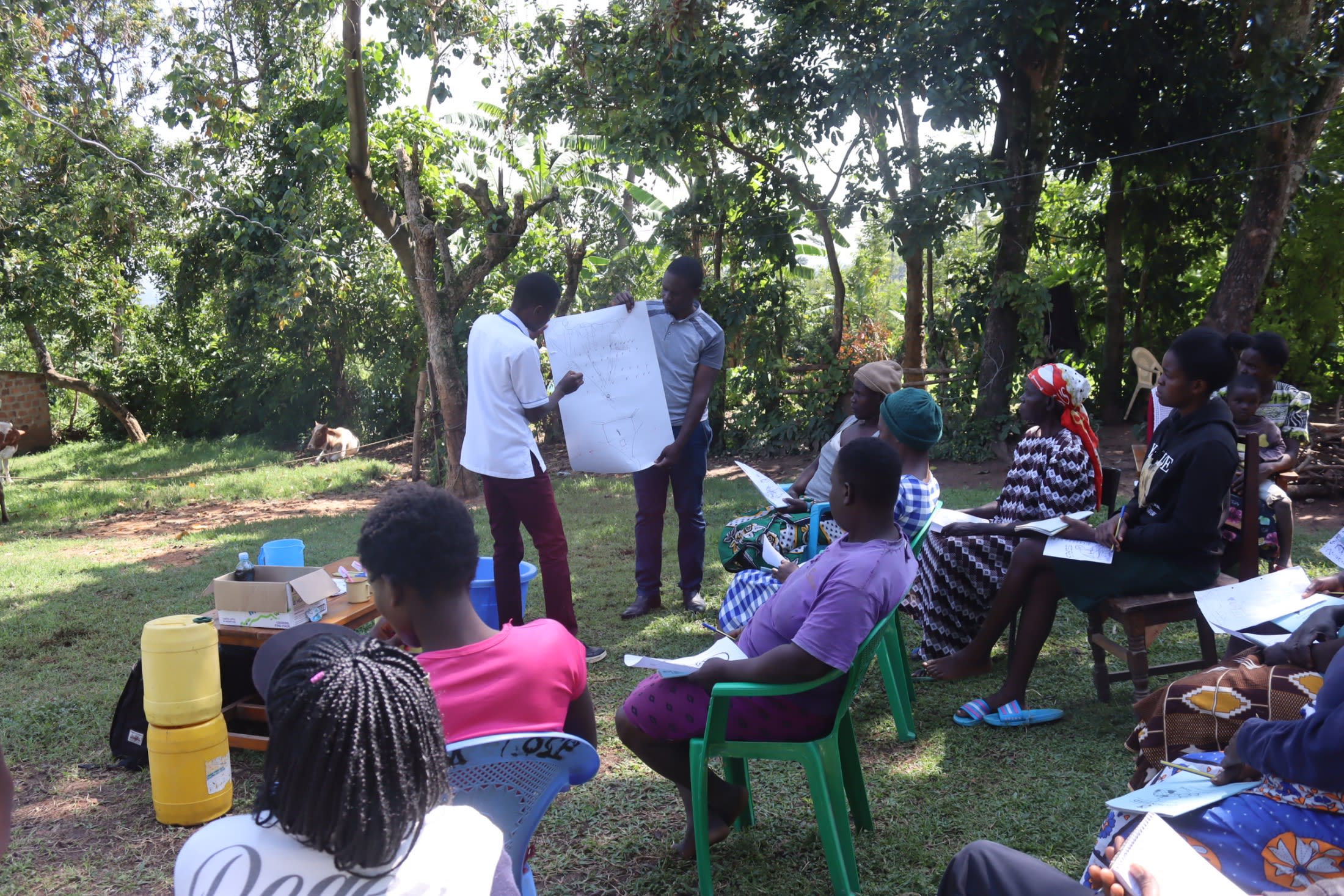The water in Echiviywa is not only dangerous to drink untreated, but it's hazardous to fetch as well. This leaves the 200 people of Echiviywa Community without a safe source of water with which to perform their everyday activities.
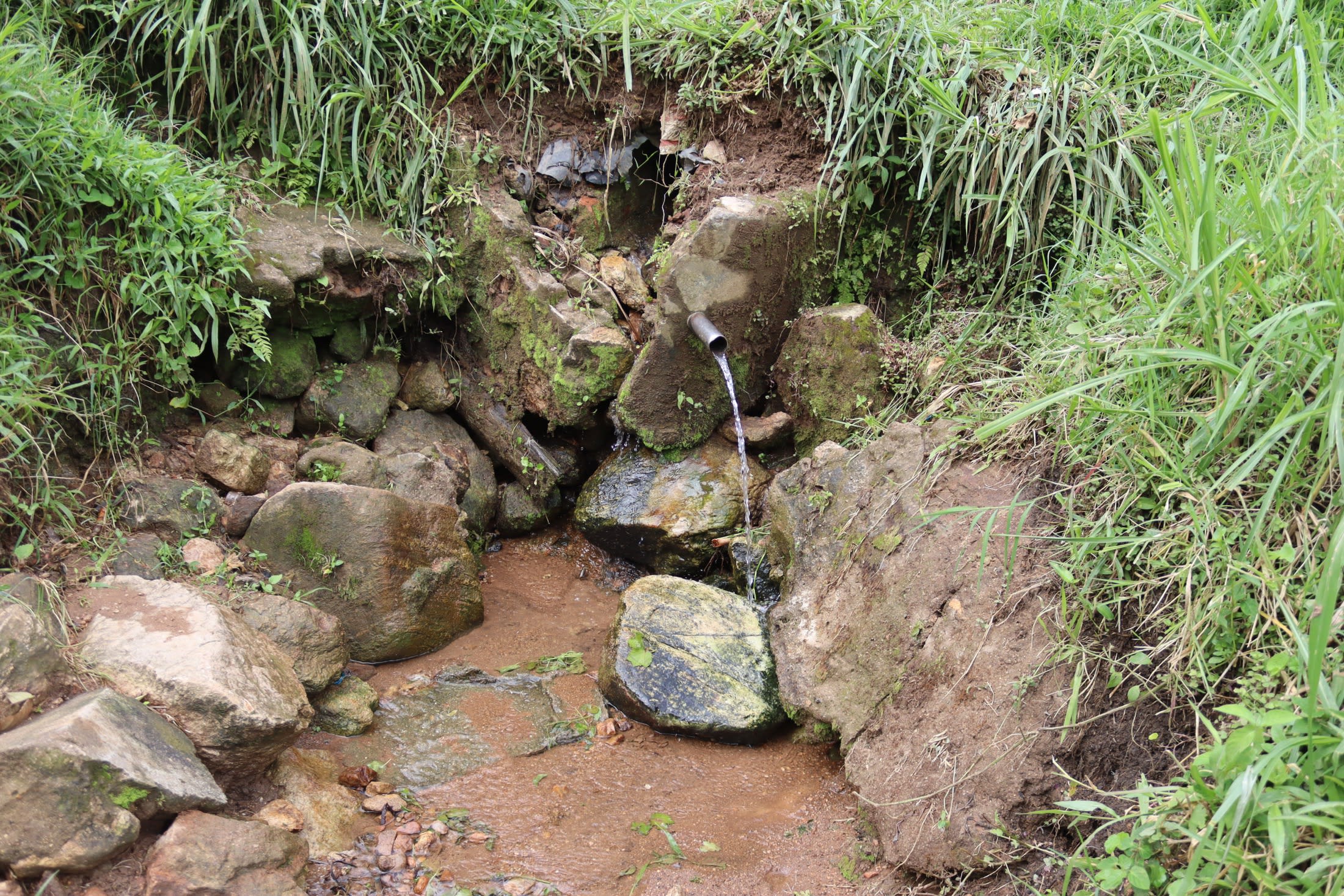
In sub-Saharan Africa, it is usually the women and children's task to fetch water for their families. But in Echiviywa, mothers can't send their children until they've grown sure of their feet because the water point is difficult to navigate.
"Accessing the water point is [a] challenge due to [the] lack of stairs and proper construction," said 53-year-old farmer Beatrice Khasila. "People fall here while trying to get water."
"I wish to have a spring with [an] access entrance," said 10-year-old Reagan S (shown fetching water in the photo below). "I always have to fold my trousers or shorts in order to get down to fetch water."
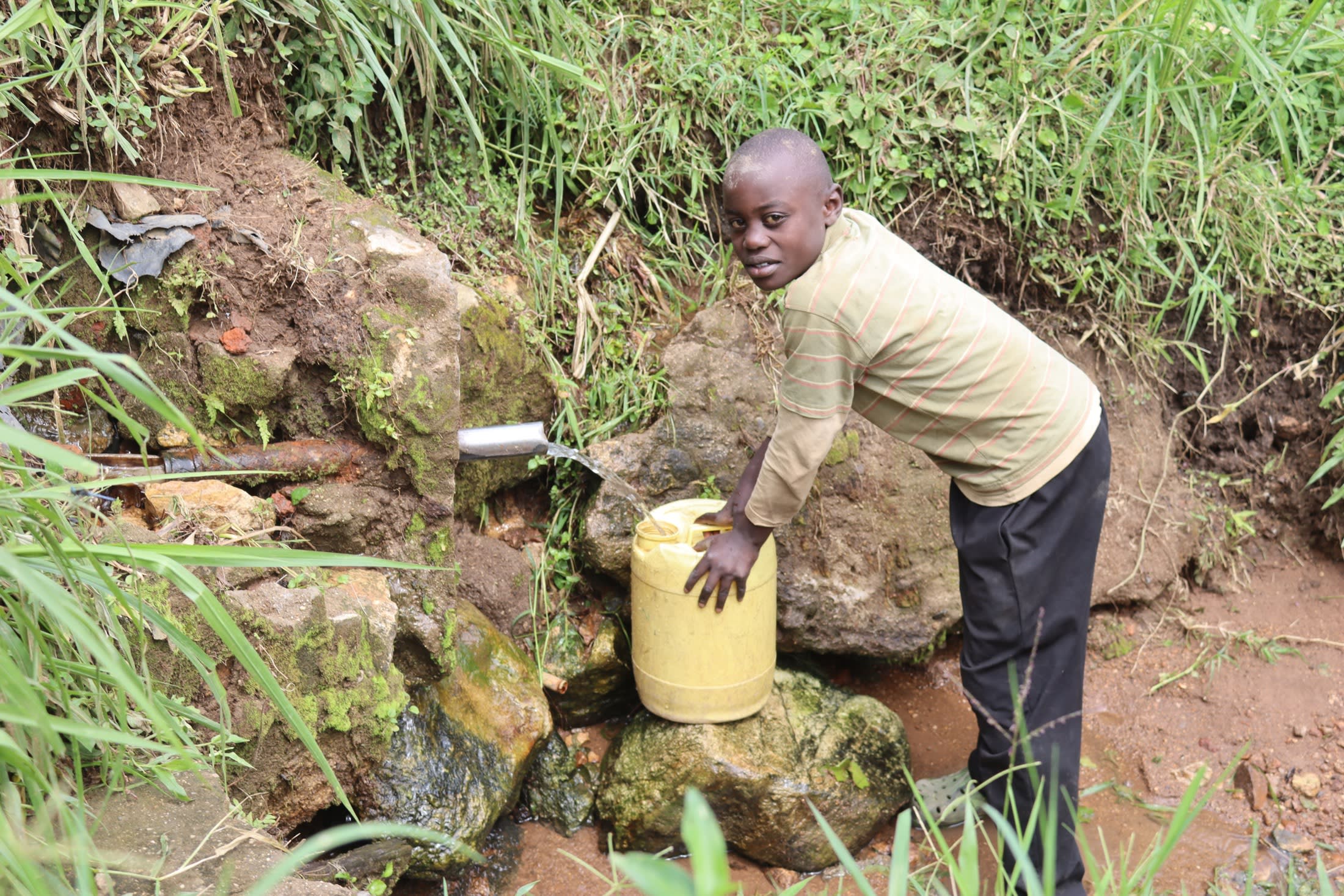
Although someone has installed a discharge pipe at the water source, the spring itself is contaminated. Seeing as the area is surrounded by maize plantations using fertilizers that would be harmful to humans, this has had a detrimental effect on the community members' health. And even though the water looks clear, when our field officers filled a glass from the discharge pipe, the glass was swimming with sediment and soil - and that's only what's visible to the naked eye.
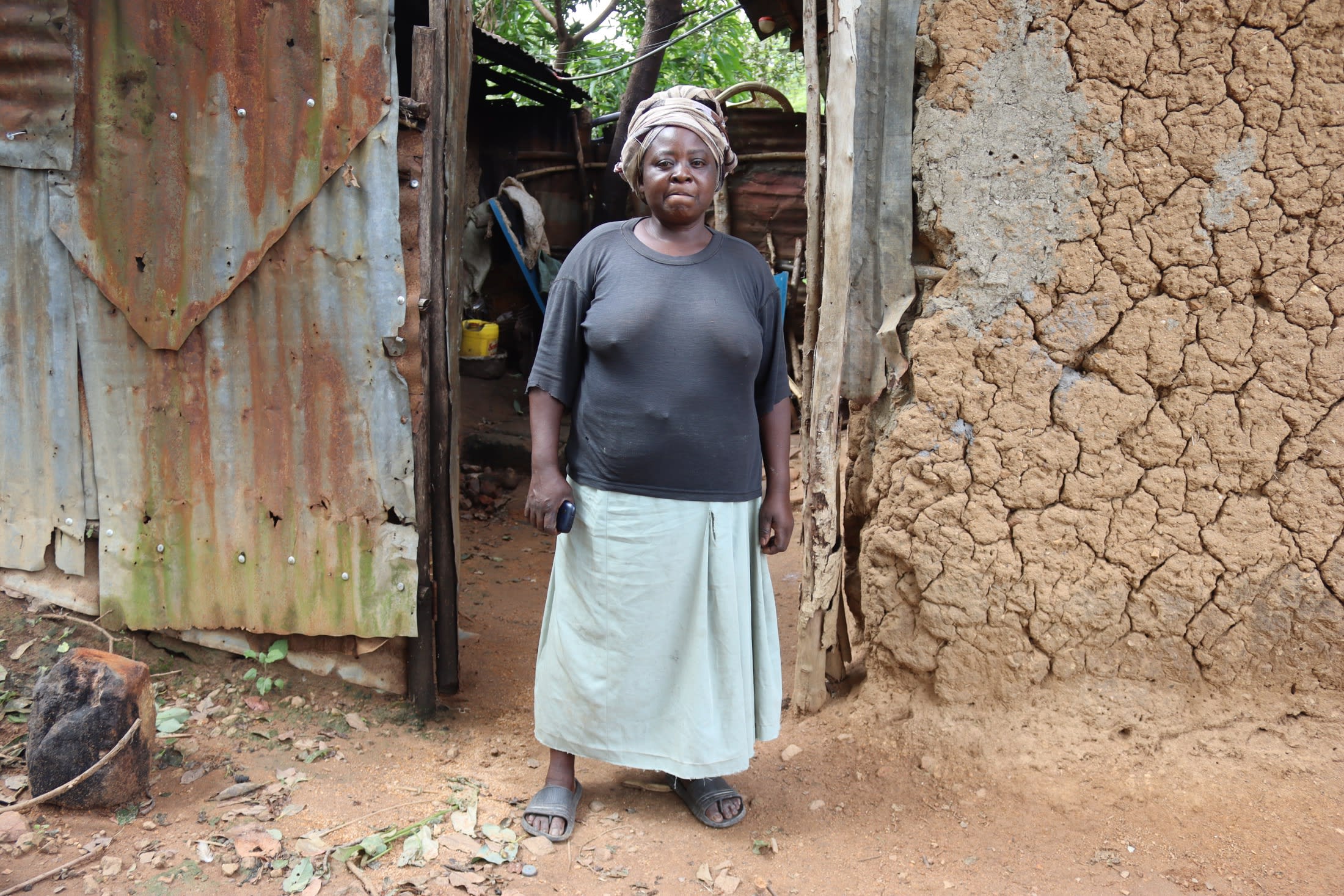
"We have experienced stormwater carrying dirt and soil to the spring," Beatrice (in the above photo) continued. "We fetch this water for home use, but it is always contaminated."
Protecting the spring will ease both of these problems. With stairs to the spring and a level platform to stand on, young children and the community's elderly will be able to fetch their own water without having to recruit help. And properly filtered water will protect Echiviywa's people from ingesting harmful pathogens and contaminants that will only hurt their health in the long run.
What We Can Do:
Spring Protection
Protecting the spring will help provide access to cleaner and safer water and reduce the time people have to spend to fetch it. Construction will keep surface runoff and other contaminants out of the water. With the community’s high involvement in the process, there should be a good sense of responsibility and ownership for the new clean water source.
Fetching water is a task predominantly carried out by women and young girls. Protecting the spring and offering training and support will, therefore, help empower the female members of the community by freeing up more of their time and energy to engage and invest in income-generating activities and their education.
Training on Health, Hygiene and More
To hold trainings during the pandemic, we work closely with both community leaders and the local government to approve small groups to attend training. We ask community leaders to invite a select yet representative group of people to attend training who will then act as ambassadors to the rest of the community to share what they learn. We also communicate our expectations of physical distancing and wearing masks for all who choose to attend.
The training will focus on improved hygiene, health, and sanitation habits in this community. With the community’s input, we will identify key leverage points where they can alter their practices at the personal, household, and community levels to affect change. This training will help to ensure participants have the knowledge they need about healthy practices and their importance to make the most of their water point as soon as water is flowing.
Our team of facilitators will use a variety of methods to train community members. Some of these methods include participatory hygiene and sanitation transformation, asset-based community development, group discussions, handouts, and demonstrations at the spring.
One of the most important issues we plan to cover is the handling, storage, and treatment of water. Having a clean water source will be extremely helpful, but it is useless if water gets contaminated by the time it is consumed. We and the community strongly believe that all of these components will work together to improve living standards here, which will help to unlock the potential for these community members to live better, healthier lives.
We will then conduct a small series of follow-up trainings before transitioning to our regularly scheduled support visits throughout the year.
Training will result in the formation of a water user committee, elected by their peers, that will oversee the operations and maintenance of the spring. The committee will enforce proper behavior around the spring and delegate tasks that will help preserve the site, such as building a fence and digging proper drainage channels. The fence will keep out destructive animals and unwanted waste, and the drainage will keep the area’s mosquito population at a minimum.

 Protected Spring
Protected Spring
 Rehabilitation Project
Rehabilitation Project


















